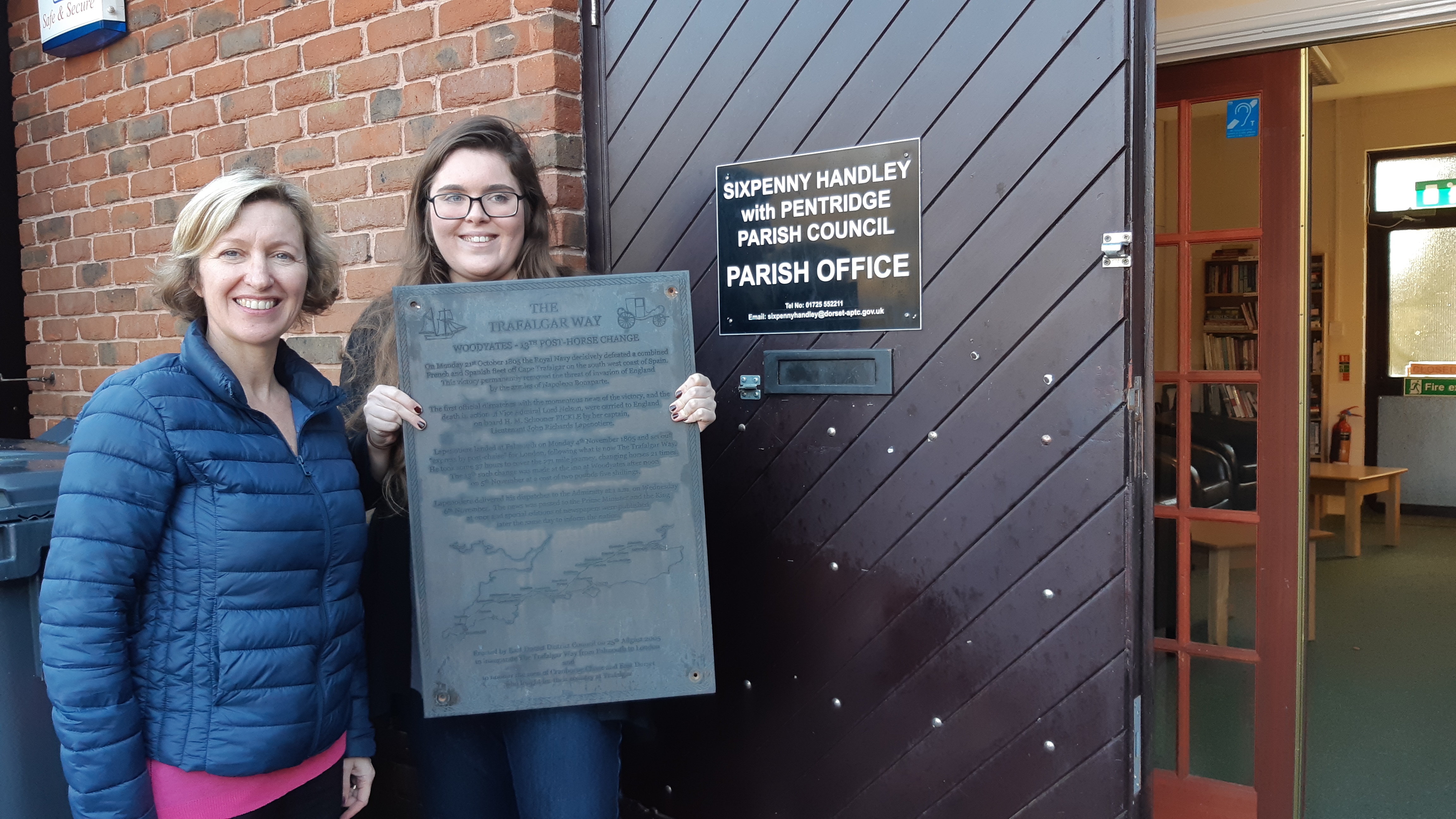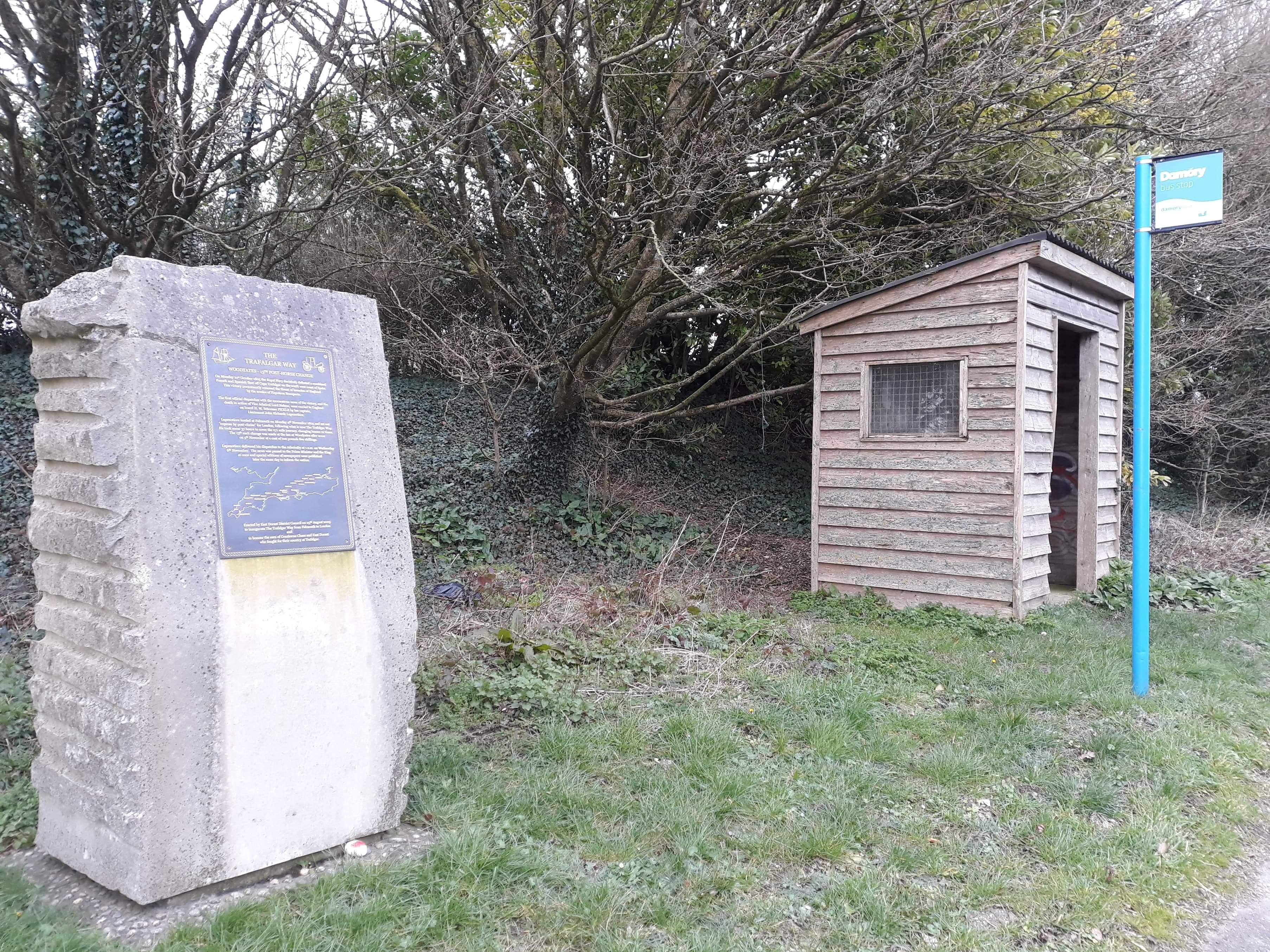-
01725 552211
The Trafalgar Way
What is The Trafalgar Way?
The Trafalgar Way, which runs from Falmouth in Cornwall to the Admiralty in central London, was created to commemorate a remarkable, but little known, true story.
This tale of great heroism takes place in 1805 a few days after the Battle of Trafalgar, Britain's greatest historic naval victory. It recounts the extraordinary journey travelled over sea and land by a Royal Naval officer, Lieutenant John Richards Lapenotiere, to bring home the official Dispatch (report) from the Battle.
There are 22 Stages, Stage 13 (Lucky for us) passes through the Parish
Blandford Forum to Woodyates
Blandford is a most attractive market town, with lots of photo opportunities and places to set up an easel.
Beyond here, the journey becomes once again very rural, with only a few villages, such as Pimperne and Tarrant Hinton, before you reach the parish of Sixpenny Handley with Pentridge, which is home to Woodyates and The Trafalgar Way's plaque commemorating the thirteenth change of horses for our messenger.
Bringing The Trafalgar Way to Life in 2020
Keen-eyed residents and visitors to Woodyates in the past twelve months, might have noticed something missing in the vicinity of the local bus stop in the last year...
Since August 2005, a bronze plaque has adorned the stone plinth beside the bus shelter, marking the inauguration of The Trafalgar Way, the national heritage coaching route from Falmouth to London, and commemorating the lives of Dorset men whose lives were lost in the famous naval battle. As of February 2019 the plaque has been missing - an absence remarked upon by more than a few people, both locals and passers-by! The plaque was originally installed by local councillors in association with historians celebrating the 200th anniversary of the Battle of Trafalgar. It's one of 39 plaques along the 271-mile route, and during an audit in 2018, the new Director of The Trafalgar Way, Kathy Brown, noticed that is was in very poor condition, the coloured inscription stripped bare, probably as a result of being sited next to the A30 and bus stop.
"The custodians of The Trafalgar Way, the 1805 Club (a heritage charity), have some funding to put towards the restoration of the plaques. They are very popular with enthusiasts driving and cycling along the Way, and they are of rather fine quality, so we want to ensure they look their best," explains Kathy. "I returned with screwdriver in hand to take down the plaque, but couldn't manage it alone. Thankfully the parish council at Sixpenny Handley arranged to help me out, and this time last year we took it away for refurbishment."

A year later and the plaque is back, looking as good as new. Do stop to take a look next time you are passing.

An epic and interesting story from history
Why is a plaque about a famous naval battle sited at Woodyates? It's a fascinating story! Records in the Naval Archive reveal that Lieutenant Lapenotiere, the bearer of the official dispatches from Trafalgar, was instructed by Vice-Admiral Collingwood, who took over command of the fleet after Nelson's death on board HMS Victory, to travel to the Admiralty in London "using every exertion, that a moment's time may not be lost in their delivery." Lapenotiere judged it faster to land at Falmouth and travel over land using the well-established network of carriage hire at inns across the south west, than to try and sail up the English Channel to Portsmouth. This was common practice back then. The system of travel, known as posting, required him to change horses a dizzying 21 times on his journey. His expenses receipt shows that the 13th horse-change was at the Woodyates Inn, which can be seen here on this excerpt from the very first Ordnance Survey map of the area. The change before this was at Blandford Forum, the one after at Salisbury.
Incredibly, Lapenotiere's journey took him only 37 hours. It must have been an exhausting and stressful journey. Luckily, the roads from Dorchester to London were a lot easier going than the rugged nightmare of Bodmin and Dartmoor which he'd encountered earlier, but his travels cannot have been made any easier with the knowledge that he was not the only naval officer rushing to deliver the news to the bosses in London. Two post-chaises with four horses apiece were spotted that day, clattering through Dorchester, both professing to be carrying "dispatches of the utmost national importance!" The task had turned into a race!
You can read all about Lapenotiere's experience and find out more about the story of The Trafalgar Way at The Trafalgar Way